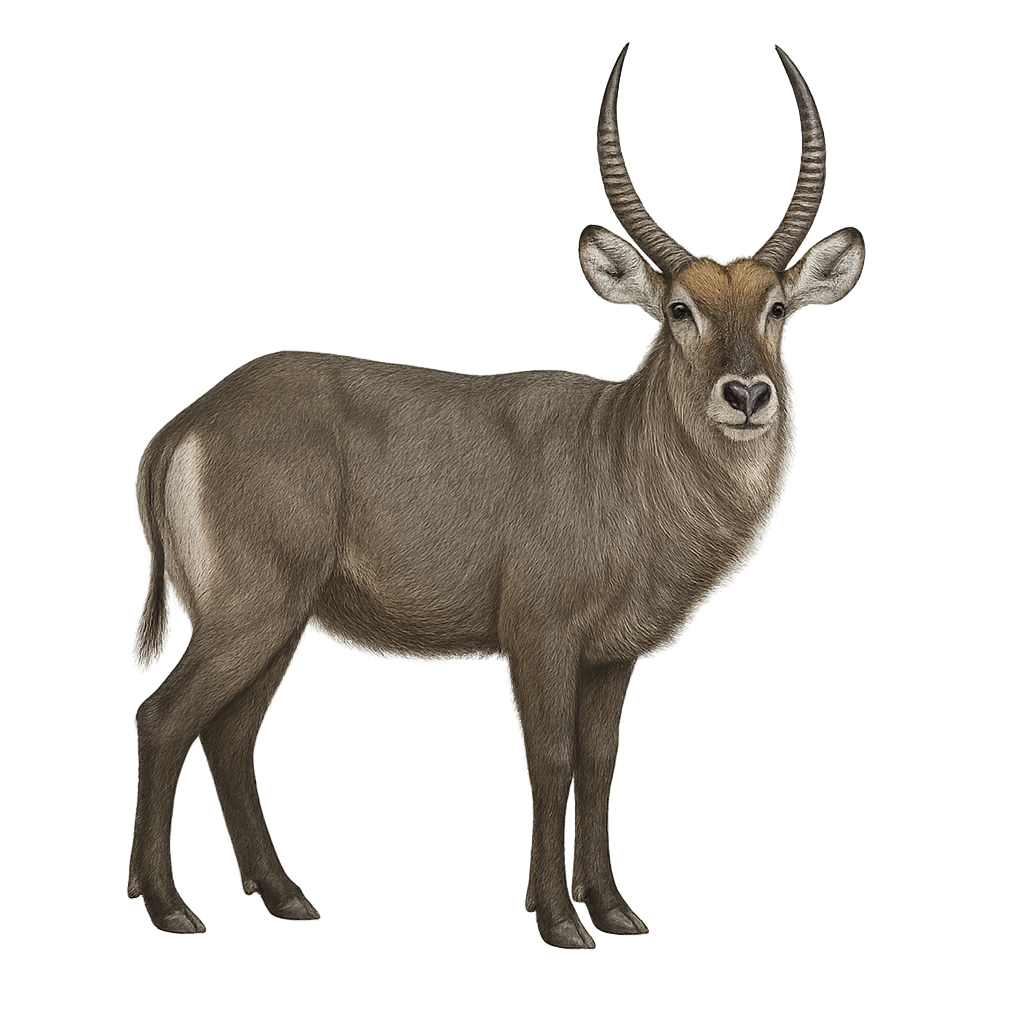Your wildlife photography guide.
Explore the waterbuck in detail, study its behavior, prepare your shots.
Where to observe and photograph the waterbuck in the wild
Learn where and when to spot the waterbuck in the wild, how to identify the species based on distinctive features, and what natural environments it inhabits. The WildlifePhotographer app offers tailored photography tips that reflect the waterbuck’s behavior, helping you capture better wildlife images. Explore the full species profile for key information including description, habitat, active periods, and approach techniques.
Waterbuck
Scientific name: xolmis irupero

IUCN Status: Least Concern
Family: BOVIDAE
Group: Mammals
Sensitivity to human approach: Suspicious
Minimum approach distance: 30 m
Rut period: September to October
Gestation: 14-16 jours
Births: September to November
Habitat:
Savannas, wet grasslands, riverbanks
Activity period :
Primarily active during the day, with peak activity in the morning and late afternoon.
Identification and description:
The waterbuck, or Kobus ellipsiprymnus, is a large African herbivore known for its grayish-brown coat and distinctive white ring on its rump. It primarily inhabits wet savannas and grasslands near water bodies, as it relies on water for survival. Males have long, curved horns, while females lack them. This gregarious mammal forms mixed herds, although adult males are often solitary or in small groups. The waterbuck is an excellent swimmer, allowing it to escape predators. Its diet mainly consists of grasses and aquatic plants.
Recommended lens:
400 mm – adjust based on distance, desired framing (portrait or habitat), and approach conditions.
Photography tips:
To photograph the waterbuck, focus on early morning or late afternoon hours when the light is soft and the animal is most active. Use a telephoto lens of at least 400mm to capture details without disturbing the animal. Be patient and observe the herd's behavior to anticipate their movements. Riverbanks and wet grasslands are ideal locations to spot them. Maintain a safe distance of 30m to avoid scaring them.
The WildlifePhotographer App is coming soon!
Be the first to explore the best nature spots, track rutting seasons, log your observations, and observe more wildlife.
Already 1 432 wildlife lovers subscribed worldwide

